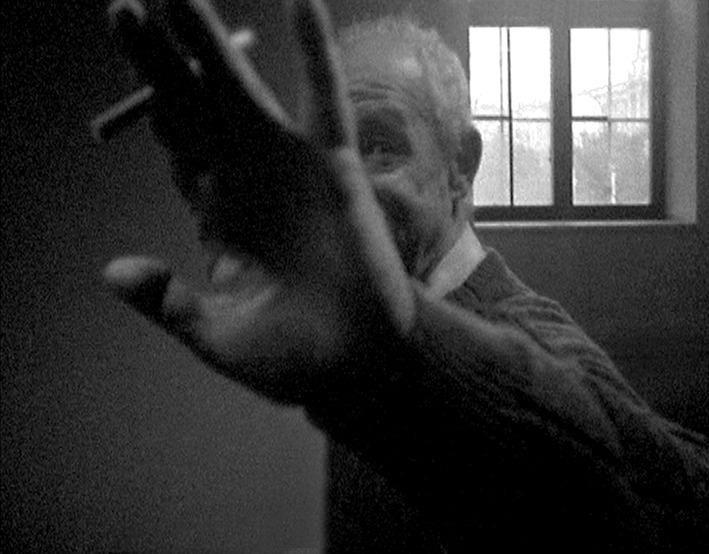Actually, everything is completely different
The onset of the film, Actually, everything is completely different, must have begun with questions such as the following: how do you portray someone who, for more than forty years, has put their artistic effort into making portraits of artists? How do you portray someone who has persistently aimed at getting closer to those portrayed rather than their art? And, finally: how do you make a portrait of someone who, for decades, not only hid these portraits from the public, but also in his films made himself vanish as much as possible as well as in public discussion of the same? The film has found an astonishingly simple solution for these questions: in order to make a portrait of someone who makes portraits, it is sufficient to apply to the portraitist the methods developed in these portraits.
The application of the Gaubesian scheme to Wilhelm Gaube himself, is, however, not to be confused with a reproduction of this scheme: the film could have shown Gaube at the editing table, similar to the way that Gaube showed many of his portrait subjects - with the artist (Gaube) between the film maker (Burger) and the images (the portraits). The film avoids the danger of this type of reproduction, which jumps to the conclusion that the cinematic portrait is art and the filmmaker an artist, by allowing a portrait of Gaube to arise from the traces of his presence in the portraits. It thereby not only uncovers the interpretive power of Gaube´s scheme, but at its core it also preserves its secret. Actually, everything is completely different.
(Vrääth Öhner)
Translation: Lisa Rosenblatt
In Wirklichkeit ist alles ganz anders. Der Filmemacher Wilhelm Gaube. Künstlerportraits, Menschenbilder etc.
2004 - 2004
Austria
51 min

